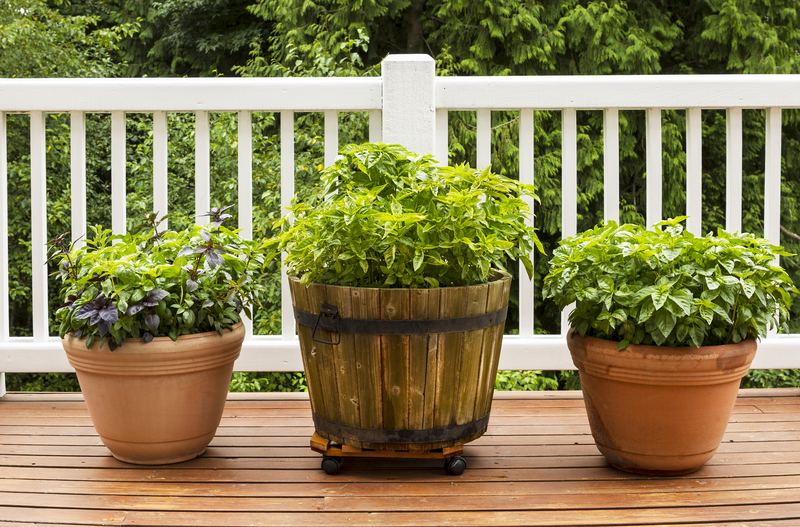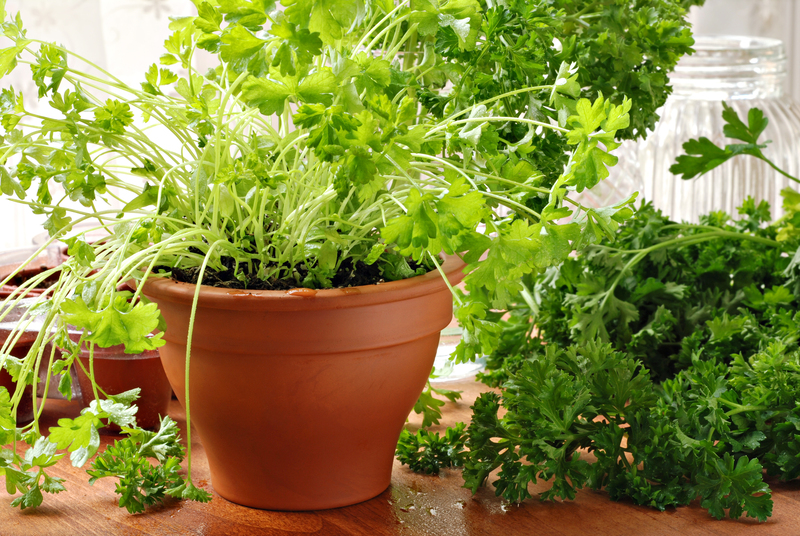Simple DIY Approaches to Tree Stump Removal
Tree stumps can be a persistent eyesore and obstacle in your yard. Whether you've removed a tree due to disease, safety, landscaping, or storm damage, you're often left with an unsightly stump. Thankfully, tree stump removal doesn't always require hiring professionals or expensive equipment. With the right knowledge and preparation, you can tackle stump removal on your own. In this comprehensive guide, we'll explore various simple DIY approaches to tree stump removal that are safe, effective, and cost-efficient.
Why Is Tree Stump Removal Important?
Before diving into different removal methods, it's crucial to understand why you should not leave a tree stump in your yard:
- Safety: Stumps present tripping hazards, particularly for children and seniors.
- Pests: Decaying stumps attract termites, carpenter ants, fungi, and other pests that can harm your garden and even your home.
- Regrowth: Many types of trees respond to cutting by sending up new shoots from the stump, resulting in unwanted regrowth that can be difficult to control.
- Curb Appeal: Tree stumps are unsightly and can lower the value and attractiveness of your property.
- Lawn Maintenance: Stumps make mowing and landscaping challenging, often causing damage to mowers and other equipment.
Given these reasons, it's clear that removing tree stumps promptly is beneficial. Next, let's explore a range of simple DIY techniques for tree stump removal.

Assessing Your Stump: Preparation Steps
Before you begin, take a few moments to assess the stump:
- Size: Smaller stumps are generally easier to remove than large, mature stumps.
- Type of Tree: Some species have deep, stubborn roots (e.g., oak), while others are more shallow-rooted.
- Location: Make sure the stump isn't near utility lines or vital structures.
- Age & Condition: Older, rotting stumps are easier to remove than freshly cut ones.
Once you've evaluated these factors, you can choose the most suitable DIY removal method.
Manual Tree Stump Removal Methods
1. Digging Out the Stump by Hand
Manual stump removal is often the most straightforward approach for small and medium-sized stumps. Here's how to do it:
Tools you'll need:- Shovel
- Mattock or grubbing hoe
- Axe
- Loppers or pruning saw
- Gloves and eye protection
-
Clear the Area:
Remove any rocks and debris from around the stump. This will make digging easier and protect your tools. -
Dig a Trench:
Use your shovel to dig around the perimeter of the stump, exposing the roots as you go. Aim for a trench about 1-2 feet from the base and at least a foot deep. -
Cut the Roots:
Once exposed, use loppers, an axe, or a pruning saw to cut through the large roots. For thick, stubborn roots, a mattock can help. -
Loosen and Remove:
With the main roots severed, wiggle the stump back and forth to loosen it. Dig further if more roots tether the stump. Eventually, you should be able to pry and remove the stump from the ground.
This method is effective for fresh stumps (less than a year old) with manageable root systems. For larger or deeper-rooted trees, consider a different approach.
2. Using a Come-Along or Winch
If you're dealing with a medium-sized stump, a come-along (manual hand winch) or a vehicle winch is a great option. Here's how:
- Dig around the stump and cut as many roots as possible (follow steps above).
- Attach a heavy-duty chain or tow strap around the stump's base.
- Secure the other end to a come-along anchored to a solid, immovable object (like another tree or a solid post).
- Slowly ratchet the come-along to pull the stump out. Do this gradually and carefully to avoid snapping the chain or strap.
Note: Never use a winch or rope attached to a vehicle unless you have professional experience. This can be dangerous if not done correctly.
Chemical Methods for DIY Stump Removal
For those who prefer less manual labor, there are chemical approaches to removing tree stumps that speed up the natural decay process.
1. Stump Rotting (Chemical Decomposition)
This technique accelerates the decomposition of the stump over several weeks or months. Most home improvement stores sell tree stump removal products using potassium nitrate or other rotting agents.
Here's a step-by-step guide:-
Prepare the Stump:
Use a drill with a large bit (1" or more) to bore deep holes throughout the top and sides of the stump. The more holes, the better. -
Apply Chemicals:
Fill the holes with the purchased chemical stump remover, following the product's directions. Water may be added to help the product soak in. -
Wait and Monitor:
Over weeks or months, the chemicals break down the wood, making it soft and spongy. -
Remove the Remnants:
Once the stump becomes soft, use an axe, shovel, or mattock to break it up and remove the fragments.
Advantages:
- Minimal physical effort
- Low cost
Considerations:
- Time-consuming (may take several months)
- Requires keeping children and pets away from chemicals
2. Homemade, Eco-Friendly Stump Decomposition
If you want a safer, more natural option for tree stump decomposition, you can speed up the breaking down of the stump with household materials:
- Drill holes in the stump as previously described.
- Fill the holes with a mixture of high-nitrogen materials such as fresh manure, compost, or a nitrogen-rich fertilizer.
- Soak the stump thoroughly with water.
- Cover the stump with a tarp to lock in moisture and heat, which encourages microbial activity and rot.
Check the stump every couple of months and repeat the process as needed. This method may take one to two years, depending on the size and type of wood, but it's environmentally friendly and inexpensive.
Alternative Approaches: Burning Out the Stump
Burning is a traditional way to get rid of unwanted tree stumps. While effective, it must be done safely and may not be permitted in all areas. Always check local fire regulations before attempting to burn a stump.
How to Burn Out a Stump:- Drill Holes: As in previous steps, drill deep holes into the stump to encourage air flow.
- Add Fuel: Pour kerosene or fuel oil into the holes. Do not use gasoline, as it is too volatile.
- Allow to Soak: Let the fuel soak in for several days to ensure penetration.
- Ignite the Stump: Carefully light the stump. Keep a hose and shovel nearby for safety.
- Monitor: Supervise the fire at all times until it dies down. You may need to add more fuel and repeat burning over several days until the stump is completely consumed.
Warning: Burning should only be attempted in safe, controlled conditions and where local laws permit. Never leave the fire unattended.
Using Power Tools for DIY Stump Removal
For larger stumps or if you want faster results, renting power tools can make the job easier. Here are two popular options:
1. Stump Grinder Rental
A stump grinder is a powerful machine that chips away a stump piece by piece. Home improvement stores often rent out these tools.
How to Use a Stump Grinder:- Read the manual and wear protective gear (gloves, goggles, ear protection, boots).
- Clear rocks and debris from around the stump.
- Position the grinder over the stump and turn it on.
- Lower the rotating blade onto the stump, moving side to side to grind it down below ground level.
- Backfill the hole with soil and cover with grass seed or sod as desired.
While effective and relatively fast, stump grinders are heavy and can be dangerous if used improperly. Follow all safety precautions and consider having a helper for larger jobs.
2. Chainsaw and Excavation Combination
With the right safety measures, a chainsaw can help cut stumps and large roots after initial digging. Always avoid cutting into dirt, which can dull the chain. Protect yourself with eye, ear, and leg protection (chaps).
Natural Decay: Patience as Your Tool
If the stump isn't problematic, leaving it to decay naturally is always an option. Accelerate this by keeping it moist and covering it with organic material to encourage microbial breakdown. While this can take several years, it requires virtually no labor or expense.
Final Steps: Filling the Hole
Regardless of which simple stump removal technique you select, you'll be left with a hole in your yard. Here's how to restore the area:
- Remove any remaining wood chips, rocks, or debris.
- Backfill with topsoil, packing it down to avoid future settling.
- Reseed with grass or plant groundcover over the area for a seamless landscape restoration.
Safety Considerations for DIY Tree Stump Removal
Safety is paramount whenever you attempt DIY tree stump removal. Always:
- Wear sturdy gloves, safety glasses, boots, and protective clothing.
- Read and follow tool or chemical instructions carefully.
- Check for underground utilities before digging--call local services to mark lines if unsure.
- Supervise burns continuously and have a fire extinguisher or hose nearby.
- Enlist a helper when handling large stumps or power equipment.

Frequently Asked Questions About Stump Removal
How long does it take to remove a tree stump with DIY methods?
Depending on the method, it can take a few hours (manual or grinding) to several months or years (chemical or natural rotting). Choose the option that best fits your patience and resources.
What is the most efficient way to remove tree stumps?
Renting a stump grinder often provides the fastest results for large stumps. For smaller stumps, digging out by hand can be effective and inexpensive.
Can I plant a new tree where a stump was removed?
Yes--but be sure to remove most of the roots and wood chips, add fresh topsoil, and let the area settle before planting.
Are chemical stump removers safe for the environment?
Most commercial stump removers are designed to be safe when used as directed, but always choose less-toxic products if you're concerned about soil and water quality.
Conclusion: Achieve a Stump-Free Yard with These Simple DIY Approaches
Removing tree stumps doesn't have to be complicated or costly. From manual digging and chemical rotting to burning and stump grinding, there's a solution for every gardener or homeowner. By following the simple DIY approaches to tree stump removal outlined here, you can restore your yard's beauty, safety, and functionality.
Take time to select the method that matches your needs, budget, and physical ability. With patience, the right tools, and a little elbow grease, you can achieve a clean, stump-free landscape and enjoy all the benefits that come with it.